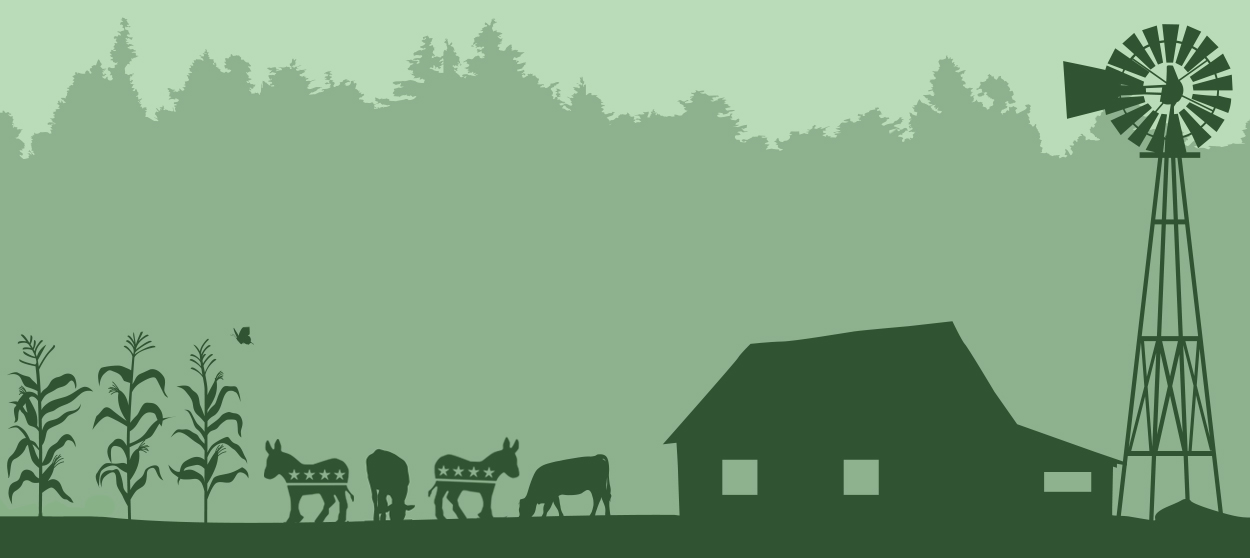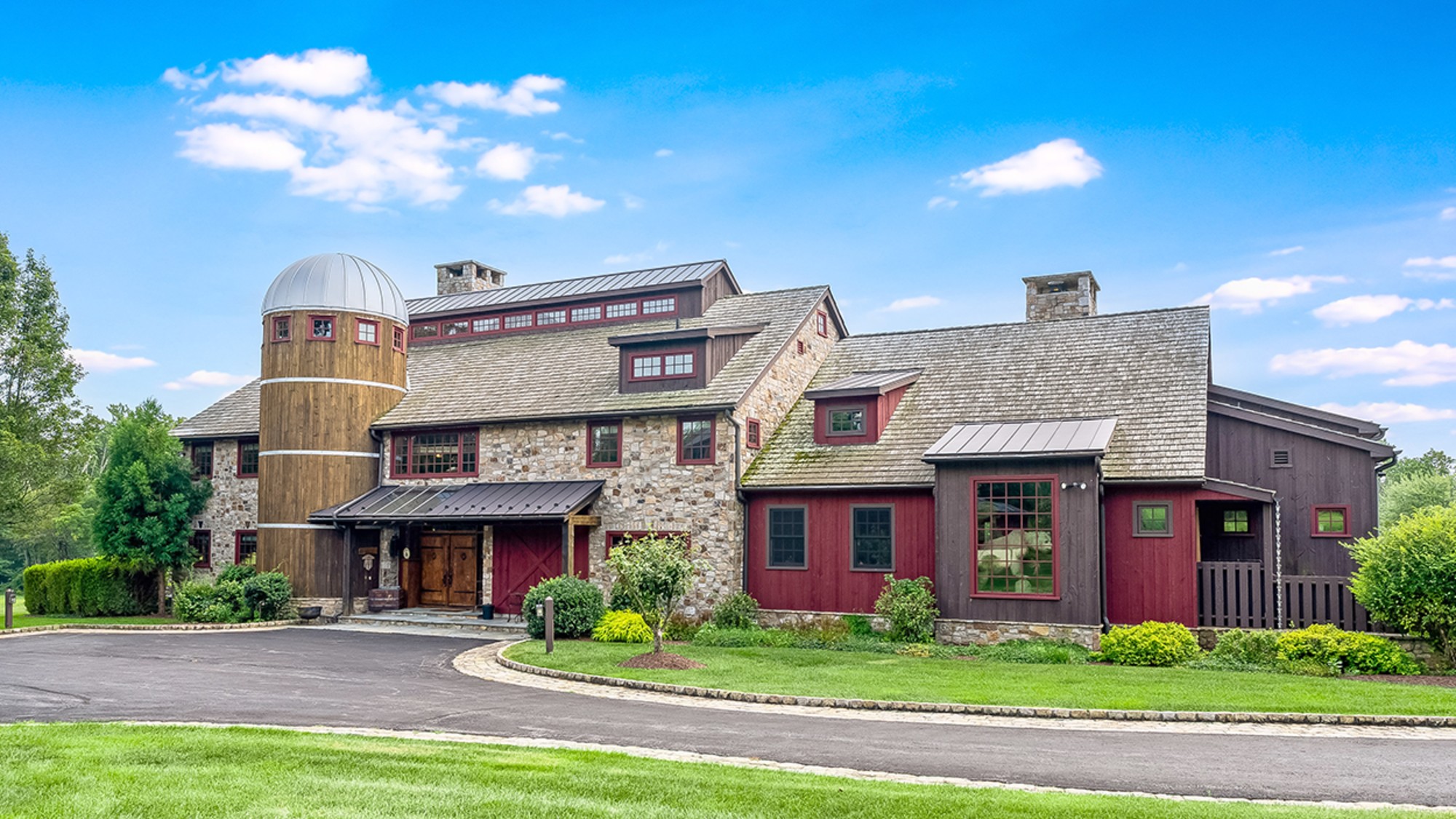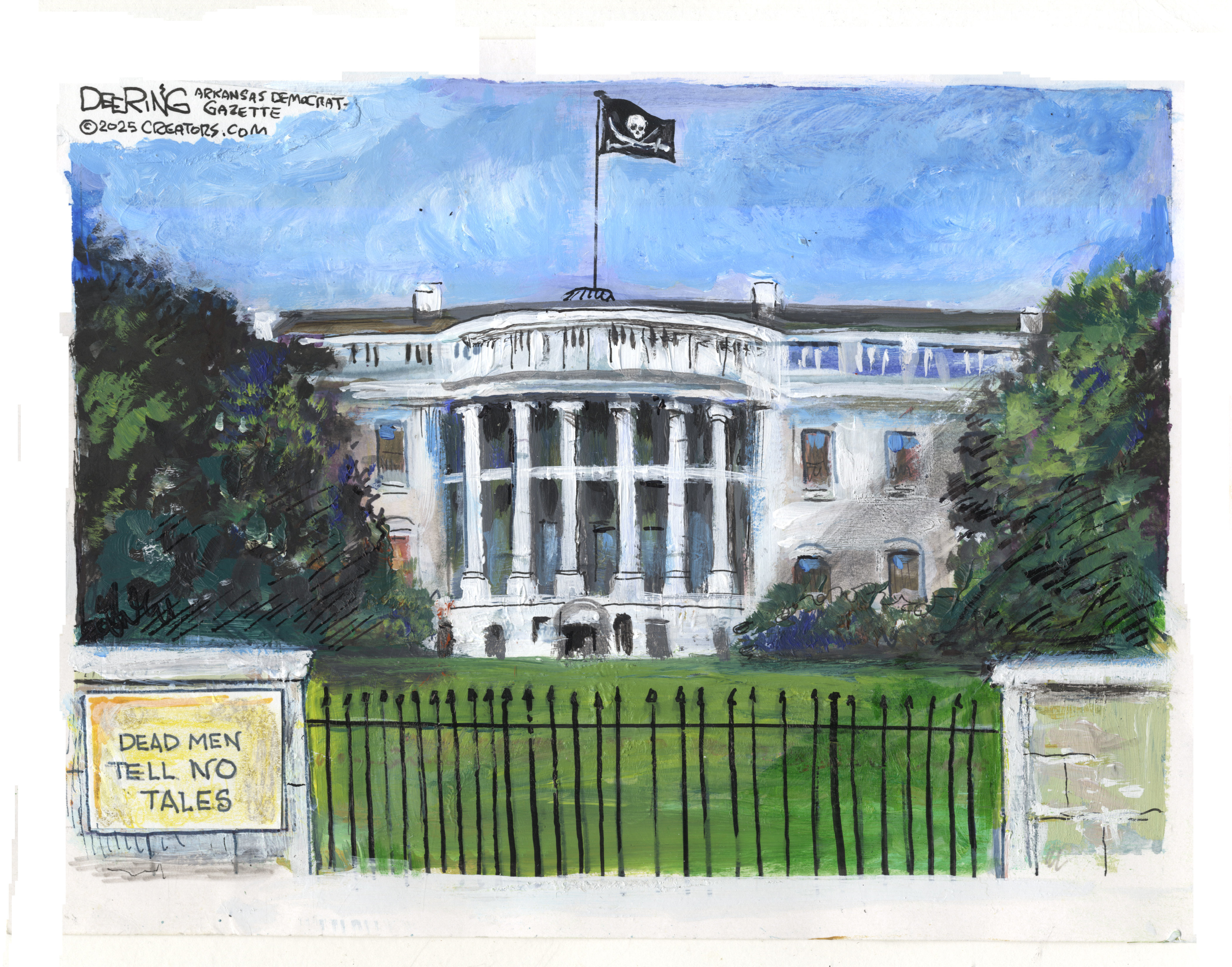How Democrats can win over rural voters
The urban/rural divide is the biggest obstacle to a successful liberal policy agenda


How do you win a game when the playing field is tilted against you?
That's the basic problem the Democratic Party, and the liberal left more generally, has in America today. While the Democrats are perfectly capable of winning a majority of votes nationally, that popular majority can easily fail to translate into a majority in Congress or in state legislatures — or in control of the White House.
It's easy to see how the playing field is skewed. The problem is most acute in the United States Senate, which gives equal representation to each state regardless of population. While Democrats still dominate some low-population states — Vermont, Delaware, and Rhode Island are all among the 10 least populous — they dominate fewer of them than Republicans do. More crucially, their disadvantage is even larger among mid-sized states that are more rural than average, states like Arkansas, Oklahoma, and Indiana. Of the 18 states that are more urban than average, Democrats are the dominant party in 12, while Republicans dominate only two (Texas and Utah). Of the 21 states that are at least 50 percent more rural than the national average, Republicans dominate 15, while Democrats dominate only one (Vermont). That three incumbent Senate Democrats lost in 2018, a "blue wave" year, should terrify anyone who believes in the party's agenda.
The Week
Escape your echo chamber. Get the facts behind the news, plus analysis from multiple perspectives.

Sign up for The Week's Free Newsletters
From our morning news briefing to a weekly Good News Newsletter, get the best of The Week delivered directly to your inbox.
From our morning news briefing to a weekly Good News Newsletter, get the best of The Week delivered directly to your inbox.
But the problem isn't limited to the Senate. The Electoral College also gives a boost to a party with a broad geographic distribution of support, and the Republican advantage there is growing. According to one recent analysis, if the 2018 House vote was repeated in the 2020 presidential election, the Democrats would win the popular vote by 7 percent (comparable to Obama's margin in 2008) but would only win 296 electoral votes (versus Obama's 365). And if they won the popular vote by 3.6 percent (Obama's margin in 2012), they would lose the Electoral College, and lose every state they lost in 2016. And the bias doesn't end there. The U.S. House of Representatives, as well as most state legislatures, are also biased against cities, even if they are not gerrymandered, because there are fewer homogeneously rural districts that waste Republican votes.
The first impulse of much liberal commentary on this problem has focused on its unfairness, and the consequent need to rectify these anti-majoritarian elements in the American political system. But while this strategy has merits — gerrymandering could be banned, the Electoral College might be practically eliminated via an interstate compact, and one or two new Democratic-leaning states could be added to the Senate — it also has significant limitations and risks if pursued in isolation. Ending gerrymandering would help, and is worthwhile in its own right, but would not eliminate the rural bias in the House. And an agenda aimed explicitly at outvoting rural voters would likely only deepen the current urban/rural divide. That could push currently competitive states like Maine and Minnesota into Republican hands. That could leave Democrats worse off than they are now. Finally, any fundamental reform of the Senate would require a constitutional convention, since Article V explicitly prohibits any amendment that would eliminate equal representation for all states in the upper house.
Steamrolling rural America wouldn't be a viable strategy anyway, even under a different political system. Liberals need buy-in from non-urban voters to enact the more ambitious parts of their agenda. Take climate change. Farming and ranching are both important contributors to climate change and important frontiers for potentially achieving negative emissions. Transportation is the largest single component contributor to emissions, and is a larger share of the emissions pie in sprawling, rural states than in dense, urban ones. Democrats need to bring these people on side to have any chance of passing a serious effort to move to a zero-net-emission economy, lest they face a yellow vest-style revolt.
But that need is also an opportunity. Farmers themselves are starting to talk to Republicans about the need to direct revenue toward climate-protective practices. Surely Democrats are in a better position to carry that banner — and to develop a farm policy less overwhelmingly oriented toward the needs of corporate agribusiness. The same is true of health care, where rural areas face significant disparities in health outcomes, in part due to the sparse distribution of medical facilities and in part due to the way that private insurers take advantage of the lack of competition. In fact, there are plenty of policy areas where Democrats have something valuable to offer to rural voters. A genuinely national party of the people would not simply resign themselves to not being heard, and accept the compromises necessary to win wealthy suburbanites instead — particularly when that coalition is less able to deliver a durable national majority.
A free daily email with the biggest news stories of the day – and the best features from TheWeek.com
If liberals and Democrats want a real national majority, they're simply going to have to win more rural voters, and more urban and suburban votes in rural states. Fortunately, that's not an impossible lift — if they really commit to it.
To start with, 2018 wasn't a wipe out for Democrats in these areas. Democrats won more than 50 percent of the vote for the House of Representatives in Iowa (36 percent non-urban), flipping two out of four House seats from red to blue. They also flipped the governorships of deep-red Kansas (26 percent non-urban), as well as Maine (61 percent non-urban) and Wisconsin (30 percent non-urban), and retained Senate seats in Montana (44 percent non-urban) and West Virginia (51 percent non-urban). (Their Senate gains were in Nevada and Arizona, both of which are more urban than the national average.)
Nor have those opportunities been exhausted. President Trump is very unpopular nationwide, but the map of his state-by-state popularity reveals some interesting patterns. He remains quite popular in Deep South states like Louisiana and Alabama, and in Appalachian states like West Virginia and Kentucky. But he is decidedly less popular in Kansas, Nebraska or Montana — and he's more deeply underwater in Iowa than he is in Pennsylvania or Virginia, likely due in large part to the negative impact of his trade policies on America’s farmers.
How can Democrats take advantage of that opportunity? Broadly speaking, they need to be prepared to do three things.
Firstly, and most straightforwardly: they need to invest in winning on the ground. Democrats need to recognize that rural voters, and rural state voters, are simply worth more than urban voters and urban state voters, and spend accordingly. They need to show up, for every election cycle and in between elections, and be willing to "waste" money in order to grind away at people's perceptions. The Democrats did a great job of recruiting nationally in 2018; that needs to be the beginning, not the end of the effort. And they need to explicitly promote people to leadership from parts of the country that are underrepresented within the party.
Voters are ultimately practical; if a Democrat running in a district in Oklahoma or rural Pennsylvania can confidently say she'll have a lot more clout than her opponent because her party really wants their votes, that will have some impact. And it'll have more impact if it starts to prove true.
A second and more difficult task is to break the rural media monopoly. Fox News and Sinclair Broadcasting's network of local stations are overwhelmingly dominant in rural America, and they actively support Republican and conservative candidates and causes. The mainstream national media, meanwhile, speaks overwhelmingly to urban and suburban America. And genuinely local news is on a starvation diet. An alternative to the GOP-oriented media, one that is locally rooted in rural America, would seem to be have a viable market niche for someone with deep enough pockets to build and grow it.
Of course, being authentically rooted in rural America would mean a certain degree of antipathy to the habits, mores and priorities of the Democrats’ core urban constituency, and probably therefore a somewhat distinct brand. In our call-out culture, that might be tough for the activist base of the national party to swallow. Add that to the need for what amounts to affirmative action for rural whites in leadership, and you might reach the breaking point.
Which raises the third and most risky thing that liberals might need to consider: the possibility of splitting the party.
A major driver of the rural/urban divide is simple resentment of the overweening cultural, economic and political power of urban elites. As the predominantly urban party, the national Democratic party is inevitably going to reflect the ethos of that elite. Inoculating against that resentment might require an actual separate identity.
Yes, America's constitution is set up in such a way that, once our elections became partisan, it quickly made sense to sort the country into two national parties. But there's no comparable incentive to have the same two parties in every state. There's no reason why the Democrats couldn't accept a situation comparable to the CDU/CSU partnership in Germany, where another party — let's call it the Farmer-Labor Party, just for kicks — ran candidates in Oklahoma and Nebraska where an urban-dominated Democratic Party was always going to have an uphill climb.
The national Democratic Party would have to make explicit concessions after each election to keep their caucus together — they couldn't rely just on party discipline. But that process might be easier for their members to stomach than having to make similar compromises to win votes before an election. And it might also be the best way to convince voters in rural America to keep voting for the new party — every election, their senators and representatives would be able to show an explicit tally of what they were able to extort from the Democrats for their supporters specifically. Meanwhile, the parts of the liberal agenda that have something important to offer to rural America — which includes a significant portion of the liberal economic agenda — would have a truly durable majority behind them.
It's an extremely risky gambit. But the trench warfare that contemporary politics has become, where both parties send wave after wave of voters over the top, only to capture and recapture the same few inches of territory, isn't a winning game for liberals who see the need for deep changes. To achieve their aspirations, they have to make deep inroads into enemy territory. Anything that makes that possible should be on the table.
Noah Millman is a screenwriter and filmmaker, a political columnist and a critic. From 2012 through 2017 he was a senior editor and featured blogger at The American Conservative. His work has also appeared in The New York Times Book Review, Politico, USA Today, The New Republic, The Weekly Standard, Foreign Policy, Modern Age, First Things, and the Jewish Review of Books, among other publications. Noah lives in Brooklyn with his wife and son.
-
 6 lovely barn homes
6 lovely barn homesFeature Featuring a New Jersey homestead on 63 acres and California property with a silo watchtower
-
 Film reviews: ‘Marty Supreme’ and ‘Is This Thing On?’
Film reviews: ‘Marty Supreme’ and ‘Is This Thing On?’Feature A born grifter chases his table tennis dreams and a dad turns to stand-up to fight off heartbreak
-
 Political cartoons for December 14
Political cartoons for December 14Cartoons Sunday's political cartoons include a new White House flag, Venezuela negotiations, and more
-
 Has Zohran Mamdani shown the Democrats how to win again?
Has Zohran Mamdani shown the Democrats how to win again?Today’s Big Question New York City mayoral election touted as victory for left-wing populists but moderate centrist wins elsewhere present more complex path for Democratic Party
-
 Millions turn out for anti-Trump ‘No Kings’ rallies
Millions turn out for anti-Trump ‘No Kings’ ralliesSpeed Read An estimated 7 million people participated, 2 million more than at the first ‘No Kings’ protest in June
-
 Ghislaine Maxwell: angling for a Trump pardon
Ghislaine Maxwell: angling for a Trump pardonTalking Point Convicted sex trafficker's testimony could shed new light on president's links to Jeffrey Epstein
-
 The last words and final moments of 40 presidents
The last words and final moments of 40 presidentsThe Explainer Some are eloquent quotes worthy of the holders of the highest office in the nation, and others... aren't
-
 The JFK files: the truth at last?
The JFK files: the truth at last?In The Spotlight More than 64,000 previously classified documents relating the 1963 assassination of John F. Kennedy have been released by the Trump administration
-
 'Seriously, not literally': how should the world take Donald Trump?
'Seriously, not literally': how should the world take Donald Trump?Today's big question White House rhetoric and reality look likely to become increasingly blurred
-
 Will Trump's 'madman' strategy pay off?
Will Trump's 'madman' strategy pay off?Today's Big Question Incoming US president likes to seem unpredictable but, this time round, world leaders could be wise to his playbook
-
 Democrats vs. Republicans: who are US billionaires backing?
Democrats vs. Republicans: who are US billionaires backing?The Explainer Younger tech titans join 'boys' club throwing money and support' behind President Trump, while older plutocrats quietly rebuke new administration
